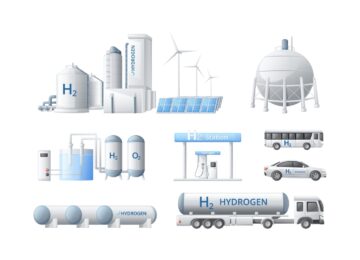Google has introduced Carbon Footprint for Google Ads.
Carbon footprint for Google Ads is a tool that provides marketers with first-party data to track emissions generated from accounts using Google advertising products such as DV360, SA360, CM360, and Google Ads.
The report provides individual breakouts of Scope-1, -2, and -3 emissions for each account, including market- and location-based Scope-2 emissions.
The reports are developed per the Greenhouse Gas Protocol carbon reporting and accounting standards (GHGP) and Global Media Sustainability Framework (GMSF).
| Google Ads Carbon Footprint Overview |
| • Includes emissions from on-site fossil fuels, data center HVAC coolants, and electricity use from Google-owned equipment. |
| • Excludes emissions from outside-deployed Google networking equipment, downstream end-of-life emissions, and embodied emissions from grid electricity generation facilities. |
| • Industry average PUE is used to estimate operational efficiencies of ancillary electricity services. |
Methodology:
Carbon Footprint for Google Ads uses the GHGP’s location-based and market-based reporting standards in reports and dashboards. Location-based scope-2 emissions data represent emissions arising from all electricity generation sources in use at a given location, while market-based scope 2 emissions data includes the impact of Google’s carbon-free electricity purchases to the appropriate data centers according to the GHGP’s market-based method and standards.
Emission calculation:
Google estimates power usage by calculating global maximum power consumption per machine type and assuming each machine uses this amount at all times.
Google’s Carbon Footprint for Google Ads report calculates the carbon footprint of its advertising products by using a shared computing platform. It calculates energy use, location-based and market-based carbon emissions, and allocates total machine energy usage to internal services.
Market-based emissions metrics match Google’s clean electricity purchases to data center loads, while shared infrastructure services track other internal services’ usage.
Power Usage Effectiveness (PUE) is used for overhead energy use in non-Google data centers. Google calculates location-based greenhouse gas emissions by multiplying location-specific energy use by a grid electricity carbon emission intensity factor but does not account for energy purchasing choices or contracts.
Google calculates energy consumption by recording machine workloads and power use hourly. CPU usage is the main contributor, with idle power distributed based on compute resource levels. Data center electric overhead load is allocated to every machine, while shared infrastructure services software layer power is allocated based on usage.
Electricity consumption:
Annual greenhouse gas emission factors are used to calculate market-based emissions in corporate greenhouse gas (GHG) accounting.
Google’s carbon-free electricity purchases make it a suitable data source for Scope 3 emissions inventories. The company’s advertising services have a large number of internal services, and emissions are quantified daily. The total carbon footprint is then allocated to specific customers using activity level data. Non-electricity emission sources contribute to the total, and emissions from these sources are calculated and added to the advertising footprint on a less dynamic and less granular basis than electricity emissions.
Electricity Maps calculates greenhouse gas emissions using grid carbon emission factors and IPCC emissions
generation factors.
Disclaimer:
Google annually obtains third-party assurance from an independent, accredited auditor for Google’s top-down footprint, but the data streams and processes required to produce these customer reports have not been similarly verified or assured, the company said.










